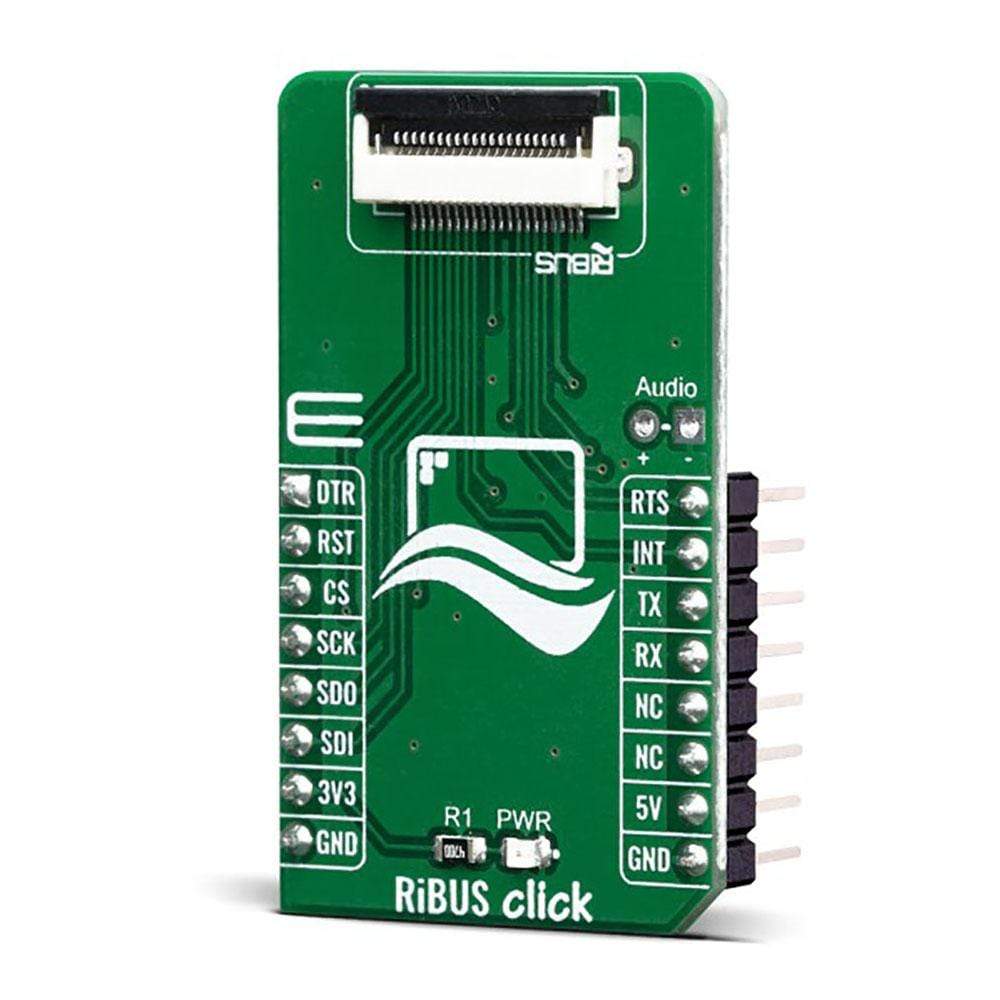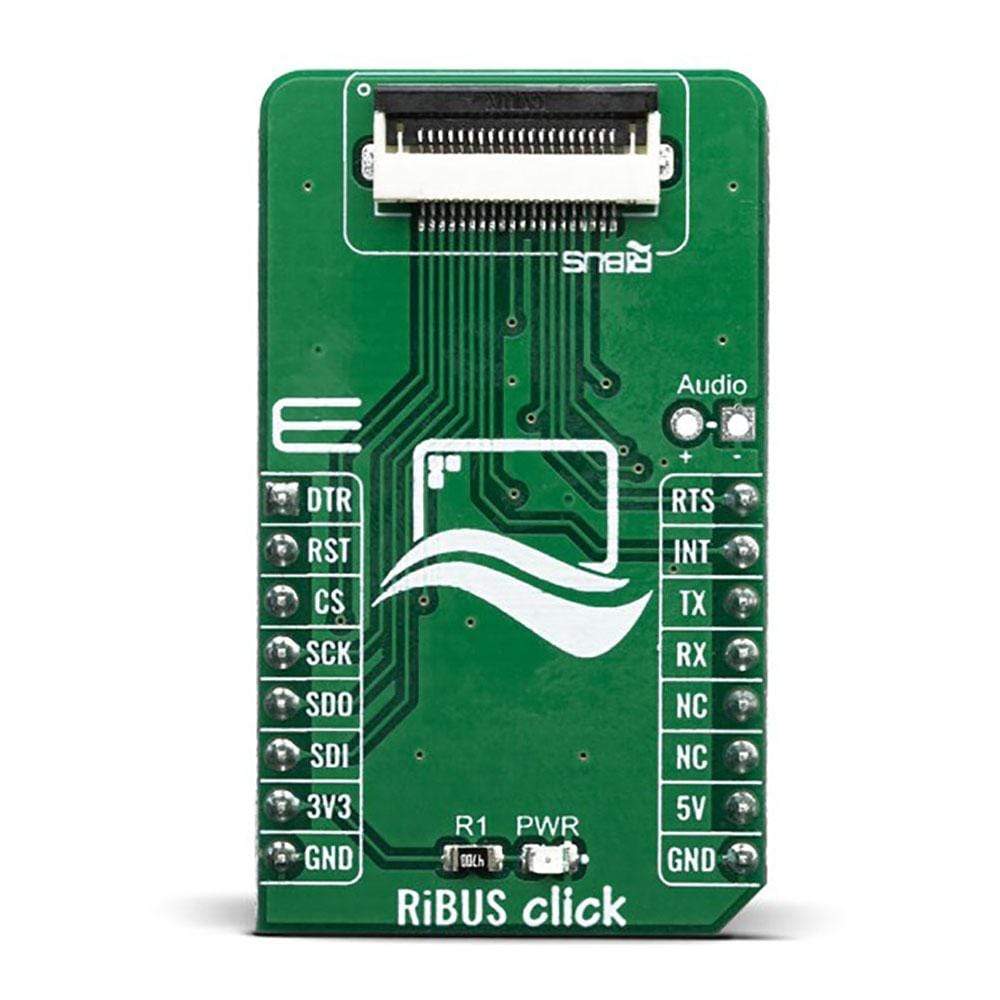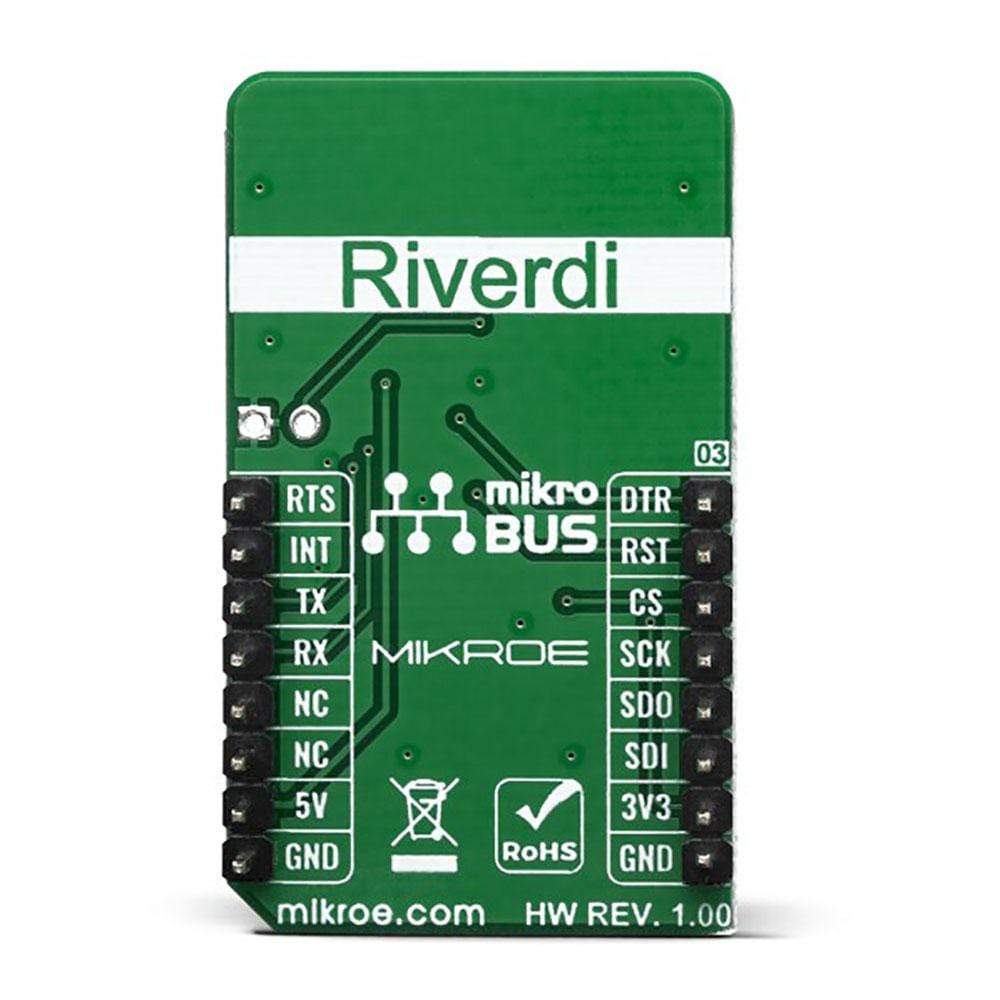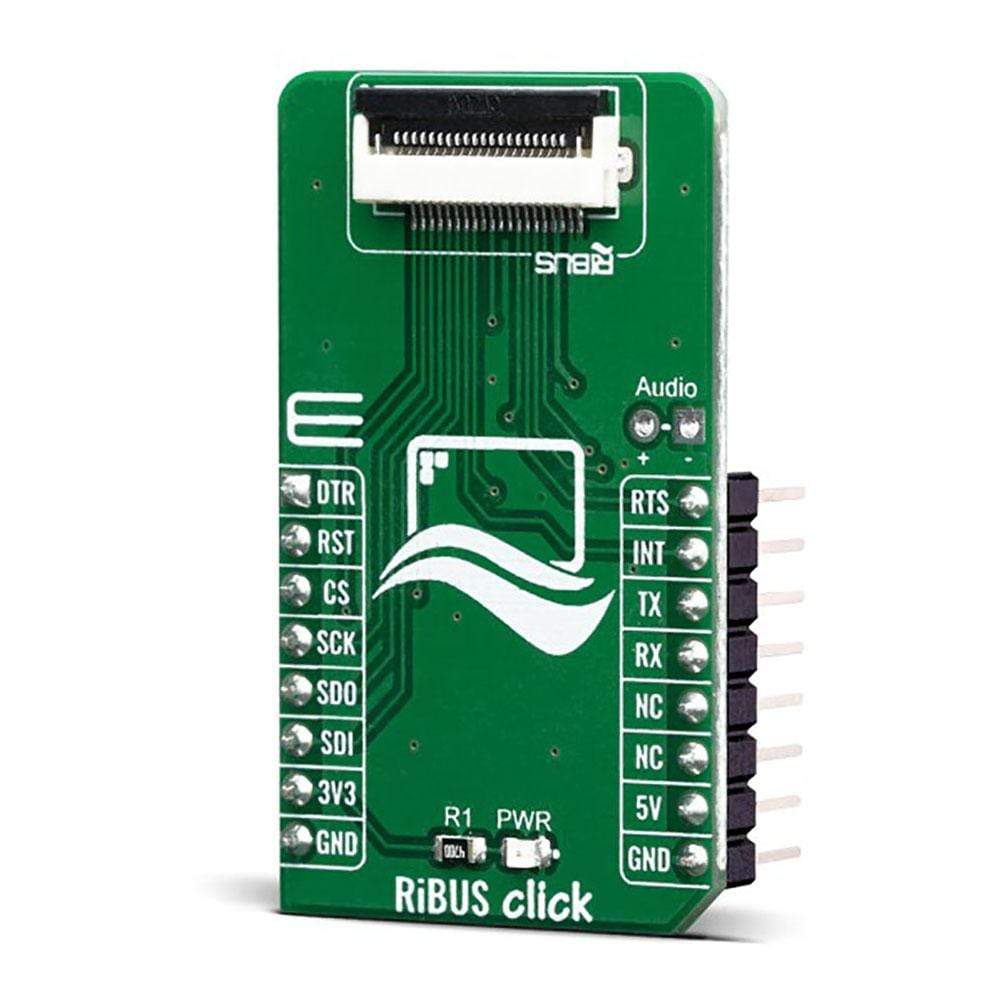
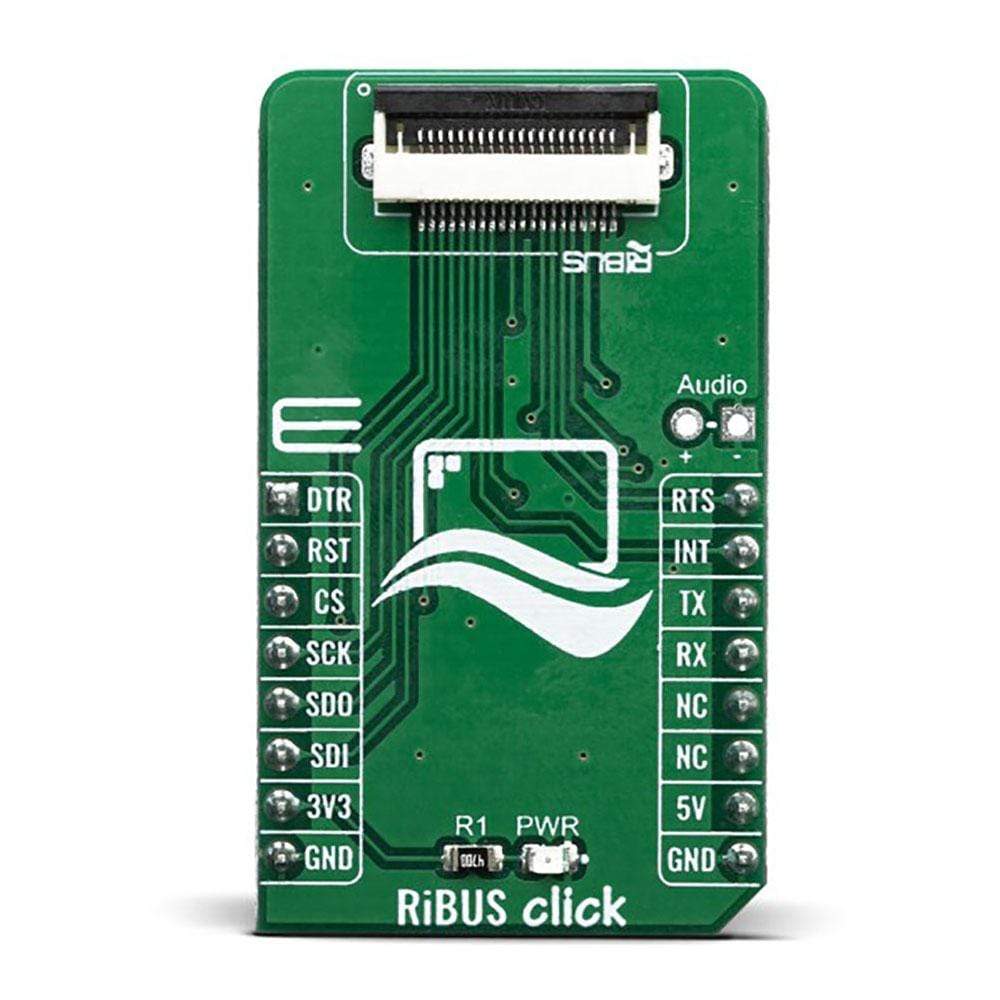
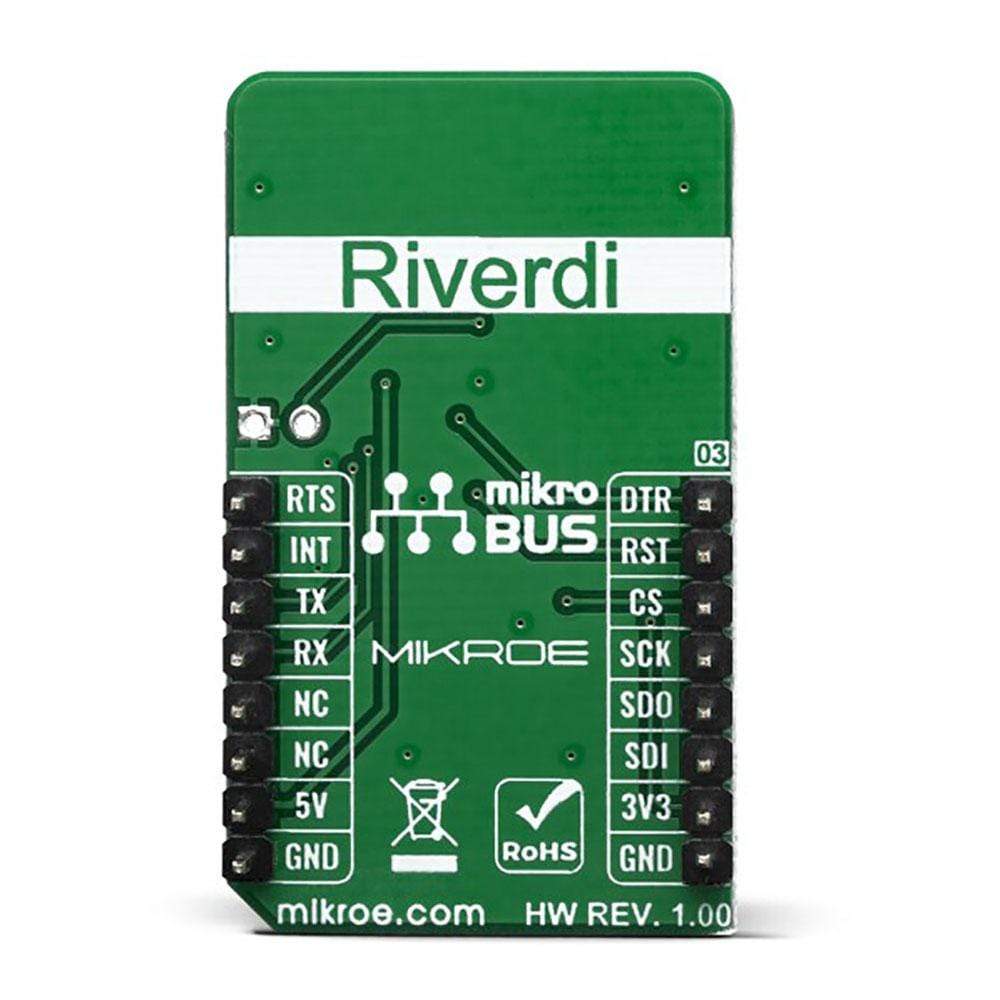
Overview
The RiBUS Click Board™ is an adapter Click Board™ that allows a mikroBUS™ to interface with RiBUS compatible display modules. RiBUS is the intelligent display BUS, by Riverdi, supported by a wide range of Intelligent Display Modules equipped with powerful graphics processors. Their displays allow graphical objects control by exchanging specifically formatted messages with the external microcontroller (MCU).
By utilizing the RiBUS Click Board™, it is possible to develop an MCU firmware application that can interact with the graphic objects on the Riverdi Display Module over the mikroBUS™. This significantly simplifies the application design, while reducing the processing load on the host MCU, allowing amazing graphically based applications to be created, even with slower 8bit MCUs.
Downloads
Le RiBUS Click Board™ est un adaptateur Click Board™ qui permet à un mikroBUS™ de s'interfacer avec des modules d'affichage compatibles RiBUS. RiBUS est le BUS d'affichage intelligent de Riverdi, supporté par une large gamme de modules d'affichage intelligents équipés de puissants processeurs graphiques. Leurs écrans permettent de contrôler des objets graphiques en échangeant des messages spécifiquement formatés avec le microcontrôleur externe (MCU).
En utilisant la carte RiBUS Click Board™ , il est possible de développer une application de micrologiciel MCU capable d'interagir avec les objets graphiques du module d'affichage Riverdi via le mikroBUS™. Cela simplifie considérablement la conception de l'application, tout en réduisant la charge de traitement sur le MCU hôte, ce qui permet de créer des applications graphiques étonnantes, même avec des MCU 8 bits plus lents.
| General Information | |
|---|---|
Part Number (SKU) |
MIKROE-3642
|
Manufacturer |
|
| Physical and Mechanical | |
Weight |
0.018 kg
|
| Other | |
Country of Origin |
|
HS Code Customs Tariff code
|
|
EAN |
8606018716326
|
Warranty |
|
Frequently Asked Questions
Have a Question?
Be the first to ask a question about this.

